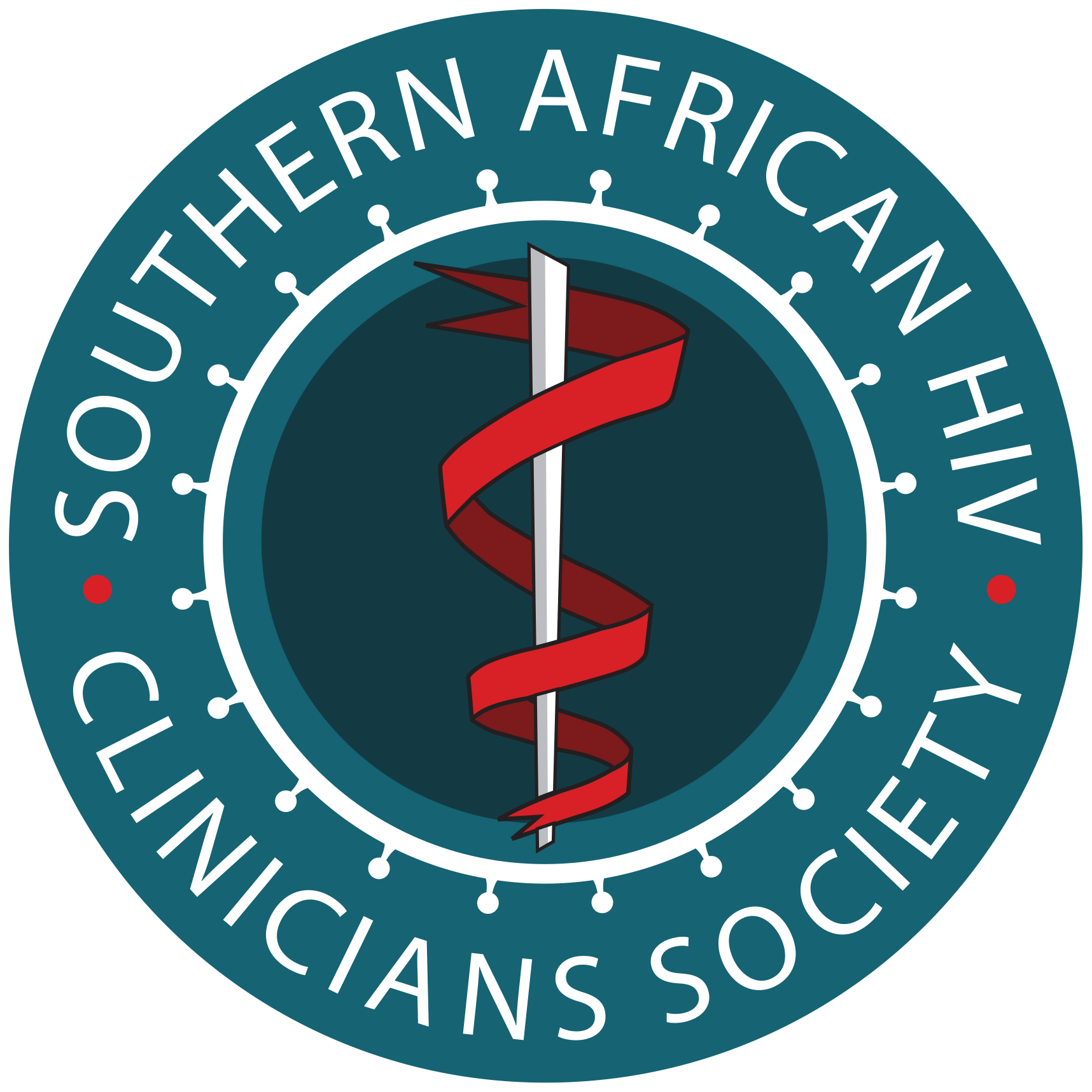ART Guidelines
References

 Key points
Key points - Virological suppression on ART is essential for maternal health, and to prevent HIV transmission to the infant. An elevated VL > 50 copies/mL in a pregnant or breastfeeding woman requires urgent action. Focus should be given to retaining these women in long-term care.
- Standard first-, second- and third-line regimens should be used in women who are pregnant or breastfeeding
Note: It is beyond the scope of these guidelines to provide comprehensive guidance for the management of pregnant women; however, it is important to note that women of reproductive age are disproportionately affected by HIV and HIV remains a major contributor to maternal deaths in South Africa (48.1% of women who died in the 2017 - 2019 triennium were living with HIV). 111 Key recommendations relating to the mother are included, but providers are encouraged to refer to national guidelines (see Box 4). All women should be linked to routine antenatal care when pregnancy is confirmed.
BOX 4: South African national guidelines for the prevention of vertical transmission of HIV. NOTE: The 2019 PMTCT guidelines are currently being updated. Be sure to use the latest version.
South African National Department of Health. Guideline for the Prevention of Mother to Child Transmission of Communicable Infections. Pretoria, South Africa: National Department of Health, 2019. PMTCT Guideline 10-2019.indd (sahivsoc.org)
Maternal health is central to healthy infants and is an essential focus of vertical transmission prevention (VTP) services: advanced HIV disease results in life-threatening opportunistic infections, leading to miscarriage, stillbirth, premature delivery, and maternal death.
An elevated VL > 50 copies/mL in a pregnant or breastfeeding woman requires urgent action. In well-functioning VTP programmes, a significant proportion of infections in infants result from undetected seroconversion during pregnancy and breastfeeding. Repeated HIV testing is essential and should occur at every routine antenatal visit (i.e. eight visits in all) and throughout breastfeeding for women testing negative.
Overall, the risk of vertical transmission of HIV is ~40% in the absence of any intervention. Timing of such transmission is as follows: in utero – 5% (with increasing risk in the third trimester); during delivery – 15–20%; up to 24 months of breastfeeding – 20%.
The time of highest risk coincides with delivery, which spans a matter of hours. The risk during 24 months of breastfeeding is slightly higher, but over a significantly greater timespan. Breastfeeding should not be stopped because of a new diagnosis of HIV, or an elevated VL in a woman already on ART. Instead, initiation of ART and management of raised VL (together with infant prophylaxis) are interventions to make breastfeeding ‘safer’. In lowresource settings, breastfeeding is recommended for at least 24 months, irrespective of the maternal HIV status. Current estimates place ART continuation rates at approximately 63% at 18 months postpartum, highlighting the need for improved postnatal retention in care to ensure success in VTP interventions.
All HIV-positive pregnant and breastfeeding women should be initiated on lifelong ART, ideally the same day that pregnancy is confirmed. Standard first-, second- and third-line regimens should be used in women who are pregnant or breastfeeding modules 11- 14). The postpartum period is a crucial window for ART retention when women may disengage from care, contributing to disease progression, increased risk of HIV transmission, and potential drug resistance.
Regarding DTG use in pregnancy, it is now clear that DTG is safe for use in women of reproductive age, regardless of reproductive plans, and in all gestational ages during pregnancy. We previously recommended that women be counselled regarding the potential risks of neural tube defects (NTDs) with the use of DTG in pregnancy. However, continuously emerging data has shown that there is no statistically significant increase in the risk of NTDs in infants of mothers using DTG (see module 3). 112 In addition DTG has been shown to be an effective drug in pregnancy with more frequent viral suppression at delivery. 32, 33, 113 For a detailed discussion on the use of DTG in pregnancy refer to the commentary released by SAHCS in July 2021: https://sahivsoc.org/Files/ DTG 20commentary 20220721.pdf
Other points regarding ART in pregnancy:
- EFV-based regimens should be avoided given the preference for DTG-based regimens in pregnancy. However, in the rare case of DTG intolerance, EFV 600 mg is a safe and effective regimen for use by women of reproductive age, including during the time from conception to the end of the first trimester. There are insufficient data to recommend routine use of EFV 400 mg in pregnant women.
- Commonly used eGFR calculations are not validated in pregnant women, therefore avoid TDF if serum creatinine ≥ 85 µmol/L.
- Dose adjustment of ART during pregnancy is only indicated for women taking both TDF and ATV/r during the second or third trimester; the ATV/r dose should be increased from 300 mg/100 mg to 400 mg/100 mg.
Particular importance should be placed on the drug-drug interactions between DTG and divalent cation-containing medication in pregnancy, since pregnant women frequently receive iron or calcium supplements and/or magnesium-/aluminiumcontaining antacids (see module 17).
Patients returning to care in pregnancy after interrupting a first-line NNRTI regimen or those exposed to previous VTP regimens should be put directly on a DTG-based regimen, rather than retrying an NNRTI-regimen (see also module 16). As per the current PMTCT guidelines, women not already on ART at the time of labour or delivery should commence TLD immediately and also receive an additional single dose of NVP 200 mg before delivery of the baby. An HIV test should be performed on all women at the time of delivery if their HIV status is unknown or previously negative. Women who are newly diagnosed with HIV during the breastfeeding period may continue breastfeeding, provided maternal ART and infant prophylaxis are initiated and adherence support given.
Note: all HIV-exposed infants should receive infant prophylaxis post-partum, as guided by the latest national PMTCT guidelines: PMTCT Guideline 10- 2019.indd (sahivsoc.org) (Note: these guidelines are currently being updated. Ensure to refer to the latest version)
Table 21 details the recommended timing of VL monitoring during pregnancy, delivery and breastfeeding.
| TABLE 21: Timing of viral load monitoring during pregnancy, delivery and breastfeeding. | ||||
| Period | ART initiation in pregnancy | Already on ART at diagnosis of pregnancy | Previously taken ART, not currently on treatment (ART interruption, ART for PMTCT) | Newly diagnosed HIV infection during delivery or breastfeeding |
|---|---|---|---|---|
| Antenatal | VL at baseline and after 3 months of ART: if > 28 weeks’ gestation, then repeat VL at delivery | VL at first ANC visit | VL at initiation of DTG-based regimen; repeat VL 3 months later – change in VL determines management | - |
| Delivery | All women need VL measurement at delivery; review result at day 3–6 postnatal visit | - | ||
| Postnatal, up to the end of breastfeeding | VL measure at 6 months postpartum; repeat VL 6-monthly during breastfeeding | VL after 3 months of ART, then 6-monthly during breastfeeding | ||
|
ANC, antenatal care; ART, antiretroviral therapy; DTG, dolutegravir; PMTCT, prevention of mother-to-child transmission; VL, viral load. |
||||
Other key recommendations:
- All pregnant women should be screened at every visit for sexually transmitted infections (STIs) and treated as needed.
- All pregnant and breastfeeding women should be screened for TB at every visit. A sputum for TB GeneXpert is recommended for all women at pregnancy confirmation, regardless of their TB symptom screen. If the TB screen is negative and the woman has a CD4+ count < 350 cells/µL, consider TB-preventive therapy (see module 27).
- Pregnant women frequently experience vomiting, which can result in viral rebound due to reduced absorption and sub-therapeutic ARV drug levels. Screen for, and actively manage, vomiting in women on ART during pregnancy
- Women are at high risk of low adherence or disengaging from care in the post-natal period. Provide support to women during this time, particularly if there are other risk factors including depression, teenage pregnancy, genderbased violence or socioeconomic challenges.

Common pitfall:
- Not performing VL monitoring at the appropriate time . See Table 21 for the appropriate monitoring intervals.
- Not acting on an elevated VL urgently. VL results should be fast-tracked, and women failing their current regimen identified early and, if necessary, a regimen switch made without delay.
- Not counselling patients on DTG about drug-drug interactions that can occur with polyvalent cationcontaining over-the-counter medications (including antacids, laxatives, multivitamins and pregnancy supplements).
- Failing to identify a pregnant or breastfeeding woman with advanced HIV disease and/or not providing appropriate prophylaxis and OI screening. All pregnant and breastfeeding women should have a known CD4+ count, whether known on ART, newly diagnosed or returning to treatment.

